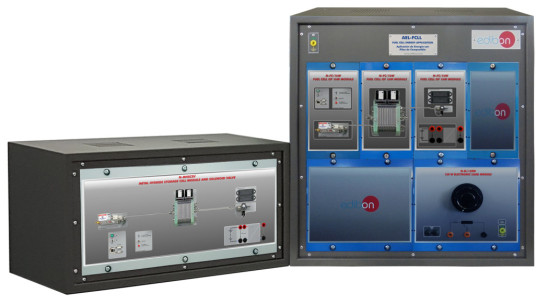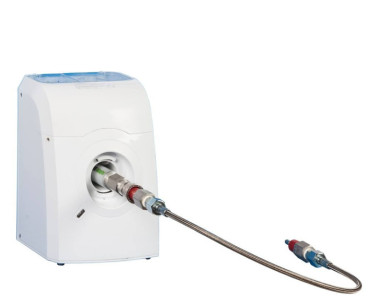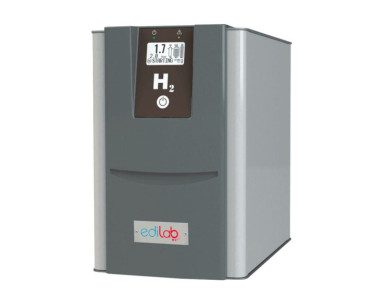The PEM Fuel Cell Advanced Unit, "EC6B", has been designed to allow the students to understand the fuel cells technology, especially that of a proton exchange membrane fuel cell (PEM). It also enables to calculate several fundamental parameters of a PEM type fuel cell, such as power density, polarization curves, efficiency, etc., and the variation of some of these parameters in function of the consumption of reagents and the developed power.
The unit is supplied with a stack of proton exchange membrane fuel cells (PEM) with a rated power of 1000 W. The stack is composed of 72 cells with channelled plate shape that allow the air flow through the membrane. The membrane facilitates the hydrogen flow, generating the electrons release. There are separate plates which conduct electricity, allowing that electrons flow, between each pair of cells.
Cells are self-humidifying and do not require any type of external humidification.
The stack has an integrated fan that is able to provide the required air for proper operation and to maintain a suitable temperature.
Hydrogen storage represents one of the essential points regarding the hydrogen economy. For that purpose, a cylinder of metal hydride (2000 NL) is included. Thanks to the absorption of the hydrogen inside, hydrogen is stored in a safe and certified way. Since the discharge pressure of the metal hydride cylinder is 15 – 20 bars, the "EC6B" unit also includes two pressure regulators: one of them is prepared to be installed in the H2 cylinder in order to regulate the outlet pressure, the other is placed at the outlet of the metal hydride cylinder in order to regulate the inlet pressure to the stack.
In addition, the unit includes two solenoid valves. One of them is located before the stack and controls the hydrogen inlet, and when the unit is switched off, the valve is closed to avoid any possible hydrogen leakage. This valve is automatically shutted when the temperature of the stack exceeds 65 °C. The other valve, placed at the stack outlet, purges the excess of water and hydrogen outside for a proper operation.
The unit also has a load regulation system. It enables the study of the generated electrical energy, the representation of the characteristic operation curves and their comparison with the theoretical curves.
The whole electrical circuit of the stack is protected by a short-circuit unit in case of an overcurrent (30 A) and low voltage shut down (36 V).
In the event of one of these problems, the hydrogen inlet solenoid valve is automatically closed.
The unit’s connections and hoses are made of materials which are suitable for their use with H2.
It includes a hydrogen leak detector with a detection range from 0 to 2% Vol. and from 0 to 100% L.E.L. (Lower Explosive Limit) respectively.
 Cookie-Präferenzen
Cookie-Präferenzen













